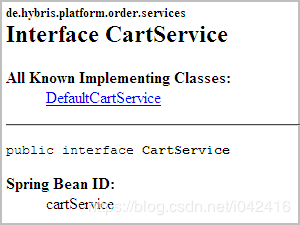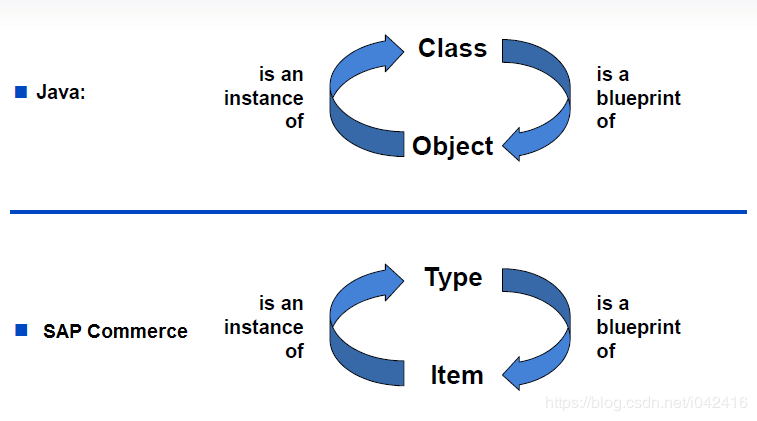SAP Commerce(SAP Hybris)学习资料汇总
版本号:v1.02
@
TOC
SAP官方帮助文档
Installer-Recipe
- 不能用于生产用途。文件夹位置:installer/recipes. 这个 链接 包含了所有recipe的说明。
Extension和Addon的概念
- 若干extensions组合在一起,以module的形式发布。
An extension can contain business logic, type definitions, a web application, or a Hybris Management Console configuration. That way, you link up in one place all of the functionality that covers a certain field of use, for example a webshop.
Addon是一种特殊的extension,扩展了Commerce Accelerator的功能。这种extension添加了UI页面,但又没有直接修改Storefront的实现。
AddOns extend the functionality of the SAP Commerce Accelerator. They are a type of extension that allow you to add front-end files such JSP, HTML, CSS, and JavaScript files, and images without modifying the storefront front-end files directly.
这个 链接 包含了一个表格,可以查询Extension和Addon的ID和description.
- 总体架构
- Extension专题
An extension is an encapsulated piece of software that extends SAP Commerce functionality by either modifying existing features, or introduction new features.
Extension modules are structural elements of an extension.
Extension module是extension的一部分。
You can implement JUnit tests for the extension's core extension module. The files for these JUnit tests must be located in the testsrc directory of the extension.
每个extension都有一个名叫 core 的 extension module,包含了该extension的type system definition,items.xml, 位于resources文件夹内。命名规范:
The name of this file is always defined accordingly: <$extension> -items.xml where <$extension> is the name of an extension.
与类型相关的Java source code文件也位于core extension module内。
items.xml的 链接 .
- web extension module: 是extension的一部分,可以通过浏览器访问:
To launch a web extension module via your web browser, go to the URL path to Platform on the server/name of extension/starting page. For example, if you are running myExtension locally on default settings, the URL would be http://localhost :9001/myExtension.
- Web application filter
- 如何创建新的extension
Internationalization-and-localization
- 什么是extension的core module:
While the Commerce Platform can run without any package, no package can run without the Commerce Platform.
Commerce platform也是由extension组成的,称为core extension. 在这些core extension之上才是build framework,和tomcat server.
Hybris-initialization和update过程
什么是Hybris的initialization:
Update: items.xml里定义的新类型,会施加到类型系统里。
Model
基于items.xml的定义生成types.
SAP-Commerce里的Spring框架
是Service Layer的foundation.
Dependent Injection: 组件的依赖不是其自身维护,而是配置在外部。
Dependency injection is a software architecture pattern in which a component's dependencies are not managed by the component itself but are configured externally.
A so-called container ( application context ) reads the configuration file, resolves the dependencies, and puts together the objects. When the objects are ready, all the dependencies are already injected.
<bean class="de.hybris.platform.order.OrderService">
<property name="stockService">
<bean class="de.hybris.platform.stock.StockService"/>
</property>
</bean>
xml文件的位置:${HYBRIS_BIN_DIR}/platform/ext/core/resources
命名规范:
There you find files with the name pattern |component|-spring.xml, where <component> is something like product, order, i18n, security, and so on. For the beans themselves, a name pattern such as xyzService is recommended, such as: productService, catalogService, and so on.
Service Layer的API通过interface暴露出来。interface的实现就是Spring beans,id name可以从SAP commerce API doc里找到。

Accelerator
SAP Commerce Accelerator is a ready-to-use web implementation template that enables you to jumpstart your implementation and easily build and maintain a feature-rich and flexible commerce solution.
- China Accelerator
Service-Layer
是三层的统称:ServiceLayer Framework (including the actual ServiceLayer, the Infrastructure Services, and the Business Services)
relies on so-called models, which are POJOs . Attributes on models have automatically generated getter and setter methods. Models are generated based on types.
ProductModel是service layer的概念,基于type自动生成,getter和setter.
Type layer也就是items.xml.
Hybris-Type-System
类型系统是对象的模板。platform里每个对象都是类型的实例。
Types定义了持久化对象:
- Attribute存储对象的数据。
- Deployment定义数据库表
- java class
A Type is the type definition in items.xml and its Java implementation.

An object instance of a type is called an item:
System-related types又由下列类型组成:
Infrastructure types: ComposedTypes (also referred to as ItemTypes) set up type definitions and may carry attributes to hold information. In the end, every persistent object in the SAP Commerce is an instance of ComposedType or of one of its subtypes.
Business-related types: (like Order, Discount, Shoe) allow you to manage product and / or customer information so that you can run your business.

every object stored in SAP Commerce is an instance of a type. Even type definitions are instances of the type Type. This means that there are two aspects of a type definition: it is an item and, at the same time, it defines other items.
To differentiate between normal object instances and type definitions, non-type objects in Platform are referred to as items. The lower case spelling item refers to an object in Platform; the upper case spelling Item refers to the type definition.
小写的items代表platform里non-type对象, 大写的代表类型定义。
The following code snippet defines an item called SpecialProduct that is a subtype of Product but its type is not defined as a ComposedType, but as a SpecialComposedType (via the metatype attribute). Instances of SpecialProduct are thus subtypes of Product, but the type definition is stored as a SpecialComposedType.
<item code="SpecialProduct" metatype="SpecialComposedType" extends="Product">
类型定义attribute,如同Java 类定义fields, attribute可以是复合类型或者简单Java类型。
Platform-Services-and-Utilities
backoffice
- 一个实际的例子: 2455449 - How-to: Hide Backoffice explorer-tree nodes based on user access rights
其他网友的资料
SAP成都研究院Commerce开发人员Zhang Jonathan的三篇概述文章:
- 本文标签: IO cat HTML core java Property IDE 开发 Architect tomcat 自动生成 数据库 App src spring JavaScript js 数据 junit dependencies ACE node ORM description CTO build Features https UI bus XML Office web bean find API example Security struct id 配置 实例 http update Service tar CSS Java类 文章 ip
- 版权声明: 本文为互联网转载文章,出处已在文章中说明(部分除外)。如果侵权,请联系本站长删除,谢谢。
- 本文海报: 生成海报一 生成海报二










![[HBLOG]公众号](https://www.liuhaihua.cn/img/qrcode_gzh.jpg)

